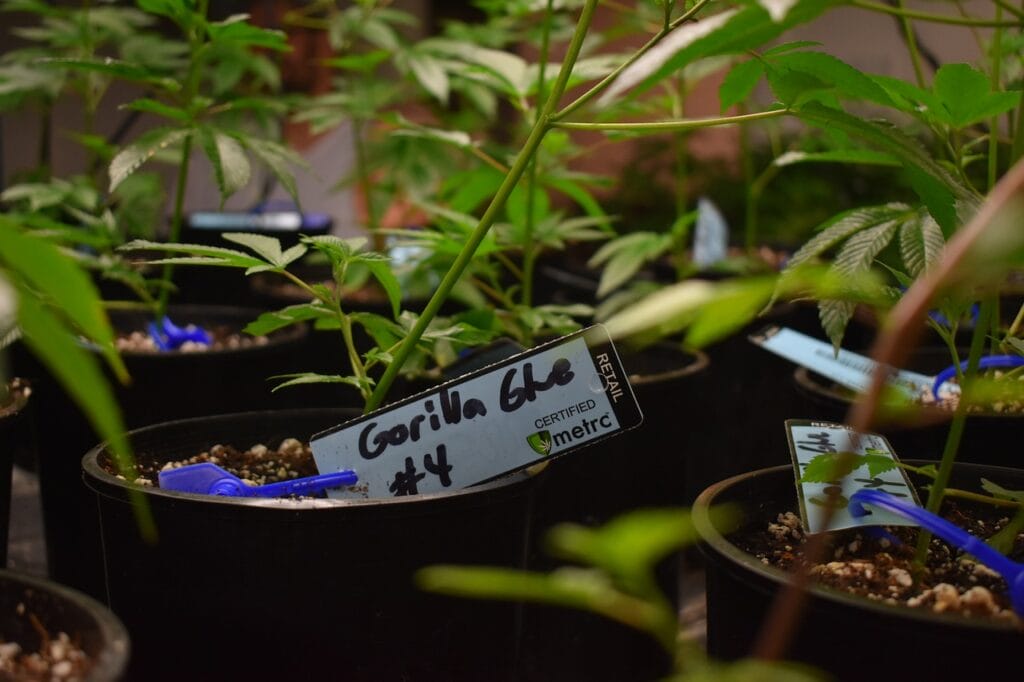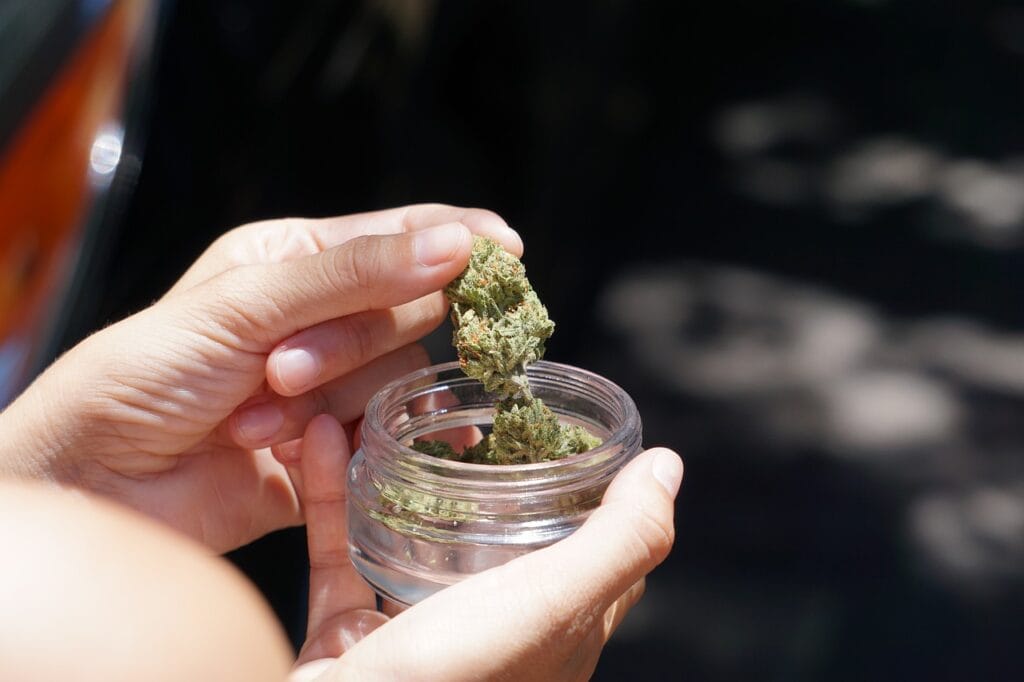Flower is the leading category of cannabis products in both Canada and the United States. In Canada, sales totalled $1.4 billion as of March 1, 2024, while in the U.S., they reached $7.4 billion. Many consumers, especially in the recreational market, prefer flower.
On average, a consumer spends $8 for about a gram, but when they buy an ounce of weed, they save more. Does this revenue sufficiently cover the costs for growers to produce high-quality buds?
Table of Contents

What Factors Affect the Pricing of Weed Cost?
The seller or the grower doesn’t arbitrarily set the price you see online or in a store. Several factors influence pricing, such as manufacturing, location, and taxes. The grower and the business owner must consider these factors when determining fair prices.
Cultivation Expense
Production entails several expenses, including labour, cultivation equipment, and security measures. The costs associated with these factors can vary based on the scale of the operation and the facility’s location.
Cultivation techniques boost crop yields both in size and speed. Specifically, hydroponic cultivation—a method where plants receive nutrients and minerals directly from a water solution. It has enabled year-round growing seasons, higher crop yields, and quicker turnover compared to traditional outdoor cultivation.
Location
One major reason is the difference in provincial regulations. Each province sets its own rules for the distribution and sale of cannabis flower, which can affect the number of retail stores, online sales, and pricing mechanisms.
Supply and demand also play a role. Provinces with more licensed producers (LPs) and a more extensive consumer base tend to have greater competition, which results in lower prices. Provinces with fewer producers and limited retail options may face higher prices due to restricted supply.
Taxation
Both federal and provincial governments impose taxes on the Canadian cannabis world. The federal government charges an excise tax based on the THC content of the cannabis strains, while provinces add their own sales taxes, which can vary by region.
These taxes can affect the final amount consumers pay. Provinces with higher tax rates see higher prices, whereas those with lower tax rates have lower prices.
Quantity Demand
Bulk purchases cost less per unit compared to smaller retail transactions. Retail prices are higher due to markups accumulating as weed moves through the distribution chain. The most significant markups occur between wholesalers and retailers. Most purchases are small and happen at the retail level.
How Much Do Growers Earn?
According to Stand For Craft, a $7 gram would break down as follows:
- Producer margin – $0.01
- Cultivation and processing – $1.50
- Lab testing – $0.55
- Packaging – $0.50
- Shipping – $0.15
- Excise taxes and regulatory fees – $1.26
- Provincial distribution tariff – $0.58
- Retailer margin – $2.45
It’s challenging to measure the financial status of large LPs, as they are unwilling to disclose their profit margins. Some are likely operating at a loss in a bid to offload flower and capture market share.
Smaller craft providers are also feeling the financial strain. Anecdotal evidence from retailers suggests that some high-quality cannabis buds have developed a loyal customer base and can command premium prices.
The most significant variability in the data appears in cultivation, processing, and packaging costs. Leading companies invest heavily in these areas to build brand loyalty, but cost differences can be substantial depending on the product.
When converted to ounce, a grower will only earn $198.
Distribution and Retail markup
Retailers bear the largest portion of the supply chain costs, with margins around 35%, though some report margins as low as 30%. Cultivation and processing account for approximately 21% of total expenses, while excise and regulatory fees account for 18%. Excise and regulatory fees exceed provincial takes, which average only 8.3%.
In Canada, marijuana priced below $10 per gram carries a minimum $1 per gram excise tax, which increases tax revenues as sales rise. Excise and regulatory fees also do not cover point-of-sale taxes like GST and PST, which push total consumer expenses upwards of 30%.
Despite declining bud prices, inflationary pressures persist throughout the supply chain. Crop input costs have risen around 20% due to increased transportation expenses.
Supply chain bottlenecks continue, particularly in sourcing pre-roll cones and coping with 15% higher packaging costs and tripled shipping times. Shipping expenses for all inputs have surged dramatically, exemplified by one supplier’s shipping costs jumping from $3,000 to over $15,000 per container between 2019 and 2022.
Growing and Processing
Growing marijuana is expensive. Cultivators must invest in various methods, secure a good location, obtain licenses, and more. Indoor and outdoor growing can also have different set-ups and costs.
Indoor Cultivation
If you want to grow indoors, you’ll need to invest some money, which can vary depending on your set-up. Indoor growing options range from a simple bucket set-up to a sophisticated grow room with an aeroponic system. These materials can range from a hundred dollars to a thousand dollars.
| Materials | Cost |
| Seed | $20 |
| Basic Grow Light | $50 to $200 |
| Basic Grow Tent | $100 to $200 |
| Grow Medium | $10 to $50 |
| Air circulation, including a fan, exhaust, thermometer, etc. | $50 to $150 |
| Electricity Rates | $50 to $200 |
| Nutrients and Supplements | $100 |
| pH Meter | $15 |
Outdoor Set-up
These estimates suggest that outdoor set-ups are cheaper because they exclude materials such as artificial lighting and air circulation systems.
Both estimates reflect only the basics associated with cultivating plants. Actual expenses can vary across provinces due to differences in material costs, labour rates, rental space, seed types, and other factors.
| Materials | Cost |
| Cannabis Seeds | $20 |
| Fabric Pots | $10 |
| Cannabis-specific Soil | $80 for three to four bags |
| Nutrients and Supplements | $100 |
| pH Meter | $15 |
Processing Expense
The preparation of ganja involves three basic processing stages:
- Harvesting. Involves cutting down mature ganja plants at the right time to ensure peak potency and flavour. Varies based on the strain and desired effects.
- Trimming: Removes excess leaves and stems from the buds to improve their appearance and quality. Helps enhance the potency and flavour of the final product.
- Drying and Curing: Removes moisture from trimmed buds without degrading cannabinoids and terpenes, while curing involves storing dried buds in containers under controlled humidity and temperature.
Each of these steps may involve additional expenses for machines and labour. While precise expenses are challenging to determine, a study from RAND provides an estimate (hours per pound).
| Steps | Scissors | Electric Trimmers | Machines | Low End | High End |
| Harvesting | 1.5 | 1.5 | 1.5 | 1.5 | 1.5 |
| Trimming | 5 | 1.5 | 1 | 0.2 | 1/3 |
| Drying or curing | 1.5 | 1.5 | 1.5 | 0.5 | 1.5 |
| Total hours per pound | 8 | 8 | 4 | 2.2 | 3 1/3 |
Wage rate: $19.44 (converted from 2010 to 2024, CAD)
Conjectured Total Cost: $38.87 to $66.64
Premium Quality Dried Flower You Can Buy Per Ounce to Save More
An ounce of weed equates to 28 grams. With this amount, you can prepare pre-rolls for future use or create a batch of edibles to suit your consumption habits. Buying weed in bulk not only saves you money but also supports local growers. Buying online has no permitted possession limits, so you can add as much as you need.
| Dried Flower | Rating | Experience | Price |
| MAC Donut | AAA | Cerebral euphoria, creativity, and soothing and relaxing body high. | $99 |
| Georgia Pie | AA | Intense body and head high | $99 |
| Glitter | AA+ | Uplifting and creative head high with a relaxing body feel. | $95 |
| Mandarin Cookie (Popcorn) | AA+ | Sedating and calming high | $99 |
| Mochi | AA+ | Promotes creativity and pain relief | $99 |

Buy an Ounce as It’s Worth the Price
You won’t regret buying marijuana measurements that are more than a gram. You get great value for your money, especially if you use them frequently or need them for medical reasons. You can purchase bulk weed and enjoy a variety of popular strains with different effects at GrassLife.
In addition to our selection of strains, we offer edibles and concentrates. We handle shipping and online payments so that you can enjoy the convenience of shopping from home. No more waiting in long lines or dealing with traffic—just a seamless and hassle-free experience.
Frequently Asked Questions
How do distribution and retail affect the product?
Effective distribution ensures that products reach consumers efficiently and reliably. It impacts product availability, with well-managed distribution networks ensuring consistent supply to meet demand fluctuations.
Retail operations directly influence consumers’ interactions with cannabis products. They provide an environment where consumers make purchasing decisions based on product presentation, pricing, and customer service.
What are the different weed measurements, and how much weed cost?
The cost of your weed depends on the quality and how many grams you plan to buy. Cannabis measurements can range from a half ounce to a quarter ounce.
- Eight of weed – 3.5g ($30 to $50)
- Quarter of weed – 7g ($50 to $80)
- Half of weed – 14g (can fill a sandwich-sized plastic bag) ($90 to $160)
- An ounce of cannabis- 28g ( $160 to $300)
- A pound (more than an ounce) – 448g ($500- $1300)
Some dispensaries may sell half a gram or 1 gram.
How do you reduce overall expenses when buying marijuana?
You can lower your total purchase by buying larger quantities and seeking out dispensaries that offer promotions, such as $100 or less per 28 grams or discounts for first-time buyers. Online dispensaries provide additional money-saving options, and you may even eliminate shipping fees by purchasing in bulk.



